 Homemade fig rolls | |
| Type | Pastry |
|---|---|
| Place of origin | Western Asia |
| Main ingredients | Fig paste |
The fig roll or fig bar is a biscuit or cookie consisting of a rolled cake or pastry filled with fig paste.
 Homemade fig rolls | |
| Type | Pastry |
|---|---|
| Place of origin | Western Asia |
| Main ingredients | Fig paste |
The fig roll or fig bar is a biscuit or cookie consisting of a rolled cake or pastry filled with fig paste.
Figs have been a popular food since ancient times, originating in the areas of the Mediterranean and Asia Minor.
Early Egyptians may have invented the first fig roll - a simple pastry made with fig paste and a flour-based dough. [1] In the Middle Ages, the arab physician Ibn Butlan is recorded to have recommended eating figs with biscuits, or sugared bread - an early instance of what could be considered a fig roll. [2]
Fig rolls were popular with British immigrants in the United States in the late 19th century. [3]


Fig Newtons are a popular mass-produced cookie similar to a fig roll. In 1892 James Henry Mitchell, a Florida engineer and inventor, received a patent for a machine that could produce a hollow tube of cookie dough and simultaneously fill it with jam. [4] The machine consisted of two funnels, one inside the other, with the outer funnel creating the dough tube and the inner funnel filling that tube with fig jam. [3]
At the same time, Philadelphia baker and fig lover Charles Roser was developing a recipe for a pastry based on the homemade fig roll. Roser approached the Cambridgeport, Massachusetts based Kennedy Biscuit Company, who agreed to take on production and sales. [3]
Kennedy Biscuit Company had recently become associated with the New York Biscuit Company, and after merger to form Nabisco, trademarked the product as the Fig Newton. The cookie was named after the Massachusetts town of Newton. It was one of the first commercially-produced baked goods in the United States. [3]

A cookie or biscuit is a baked snack or dessert that is typically small, flat, and sweet. It usually contains flour, sugar, egg, and some type of oil, fat, or butter. It may include other ingredients such as raisins, oats, chocolate chips, or nuts.
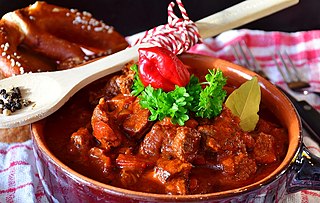
Hungarian or Magyar cuisine is the cuisine characteristic of the nation of Hungary, and its primary ethnic group, the Magyars. Hungarian cuisine has been described as being the spiciest cuisine in Europe. This can largely be attributed to the use of their piquant native spice, Hungarian paprika, in many of their dishes. A mild version of the spice, Hungarian sweet paprika, is commonly used as an alternative. Traditional Hungarian dishes are primarily based on meats, seasonal vegetables, fruits, bread, and dairy products.
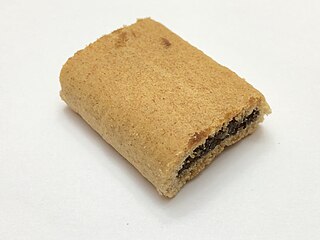
Newtons are a Nabisco-trademarked version of a cookie filled with sweet fruit paste. "Fig Newtons" are the most popular variety. They are produced by an extrusion process. Their distinctive shape is a characteristic that has been adopted by competitors, including generic fig bars sold in many markets.
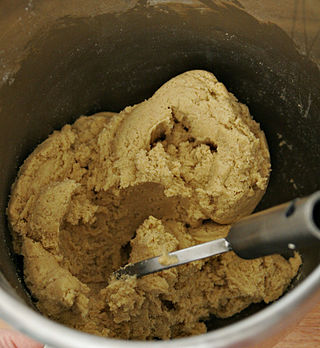
Dough is a thick, malleable, sometimes elastic paste made from grains or from leguminous or chestnut crops. Dough is typically made by mixing flour with a small amount of water or other liquid and sometimes includes yeast or other leavening agents, as well as ingredients such as fats or flavorings.
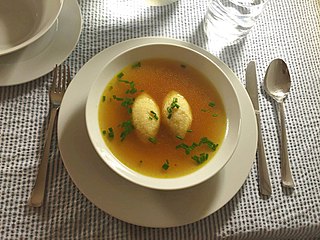
Austrian cuisine consists of many different local or regional cuisines. In addition to Viennese cuisine, which is predominantly based on the cooking traditions of the Habsburg Empire, there are independent regional traditions in all the states of Austria.
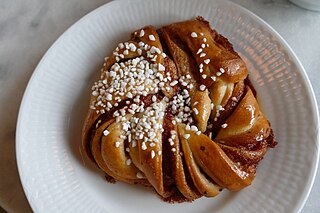
A cinnamon roll is a sweet roll commonly served in Northern Europe and North America. In Sweden it is called kanelbulle, in Denmark it is known as kanelsnegl, in Norway it is known as kanelbolle, skillingsbolle, kanelsnurr, or kanel i svingene, in Finland it is known as korvapuusti, in Iceland it is known as kanilsnúður, and in Estonia it is known as kaneelirull. In Austria and Germany, it is called Zimtschnecke. In Slovakia and the Czech Republic, it is called osie hniezdo/vosí hnízdo.

A hamantash is an Ashkenazi Jewish triangular filled-pocket pastry associated with the Jewish holiday of Purim. The name refers to Haman, the villain in the Purim story. In Hebrew, hamantashen are also known as אוזני המן, meaning "Haman's ears". "Haman's ears" also refers to a Sephardic Purim pastry, "Orejas de Haman", thought to originate in Spain and Italy, that is made by frying twisted or rolled strips of dough.

A Swiss roll, jelly roll, roll cake, cream roll, roulade or Swiss log is a type of rolled sponge cake filled with whipped cream, jam, icing, or any type of filling. The origins of the term are unclear; in spite of the name "Swiss roll", the cake is believed to have originated elsewhere in Central Europe, possibly Austria or Slovenia. It appears to have been invented in the nineteenth century, along with Battenberg cake, doughnuts, and Victoria sponge. In the U.S., commercial snack-sized versions of the cake are sold with the brand names Ho Hos, Yodels, Swiss Cake Rolls, and others. A type of roll cake called Yule log is traditionally served at Christmas.

Kue is an Indonesian bite-sized snack or dessert food. Kue is a fairly broad term in Indonesian to describe a wide variety of snacks including cakes, cookies, fritters, pies, scones, and patisserie. Kue are made from a variety of ingredients in various forms; some are steamed, fried or baked. They are popular snacks in Indonesia, which has the largest variety of kue. Because of the countries' historical colonial ties, Koeé (kue) is also popular in the Netherlands.
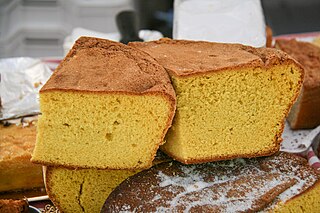
Bizcocho is the name given in the Spanish-speaking world to a wide range of pastries, cakes or cookies. The exact product to which the word bizcocho is applied varies widely depending on the region and country. For instance, in Spain bizcocho is exclusively used to refer to sponge cake. In Uruguay, most buttery flaky pastry including croissants are termed bizcocho, whilst sponge cake is called bizcochuelo. In Chile, the Dominican Republic, and Bolivia bizcocho refers to a sweet dough (masa) baked with local ingredients, similar to the bizcocho from Spain. In Ecuador the dough of a bizcocho can either be sweet or salty. The US state New Mexico is unusual in using the diminutive form of the name, bizcochito, as the name for a locally developed and very popular cookie.

Ka'ak or kahqa is the common Arabic word for cake or biscuit, in its various senses, and can refer to several different types of baked goods produced throughout the Arab world and the Near East. The bread, in Middle Eastern countries, is similar to a dry and hardened biscuit and mostly ring-shaped. Similar pastry, called "kue kaak", is also popular in Indonesia.
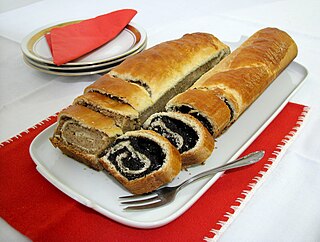
The poppy seed roll is a pastry consisting of a roll of sweet yeast bread with a dense, rich, bittersweet filling of poppy seed. An alternative filling is a paste of minced walnuts, or minced chestnuts.
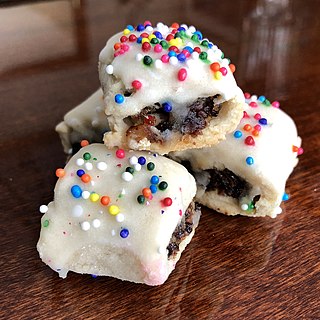
Cuccidati are fig-stuffed cookies originating in the Sicily region of Italy, traditionally served at Christmas time.